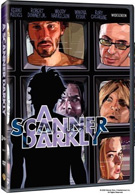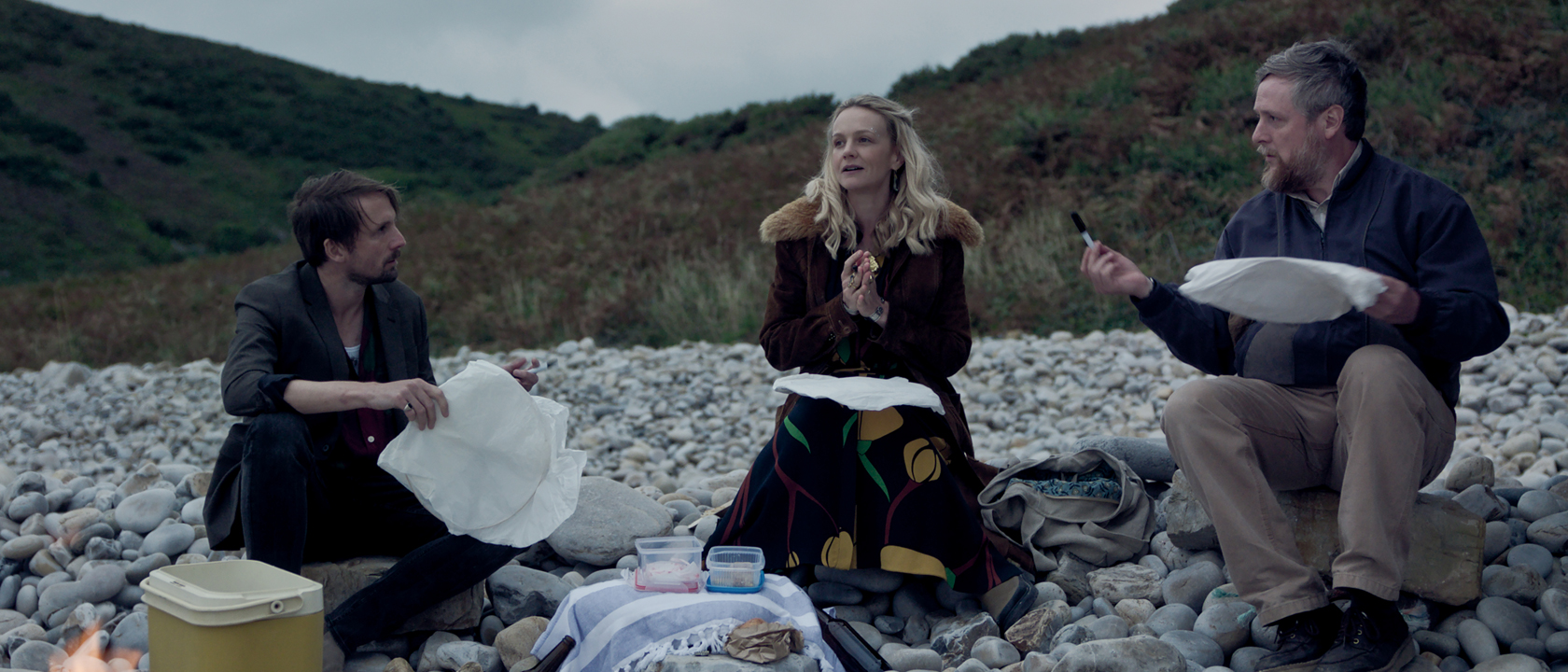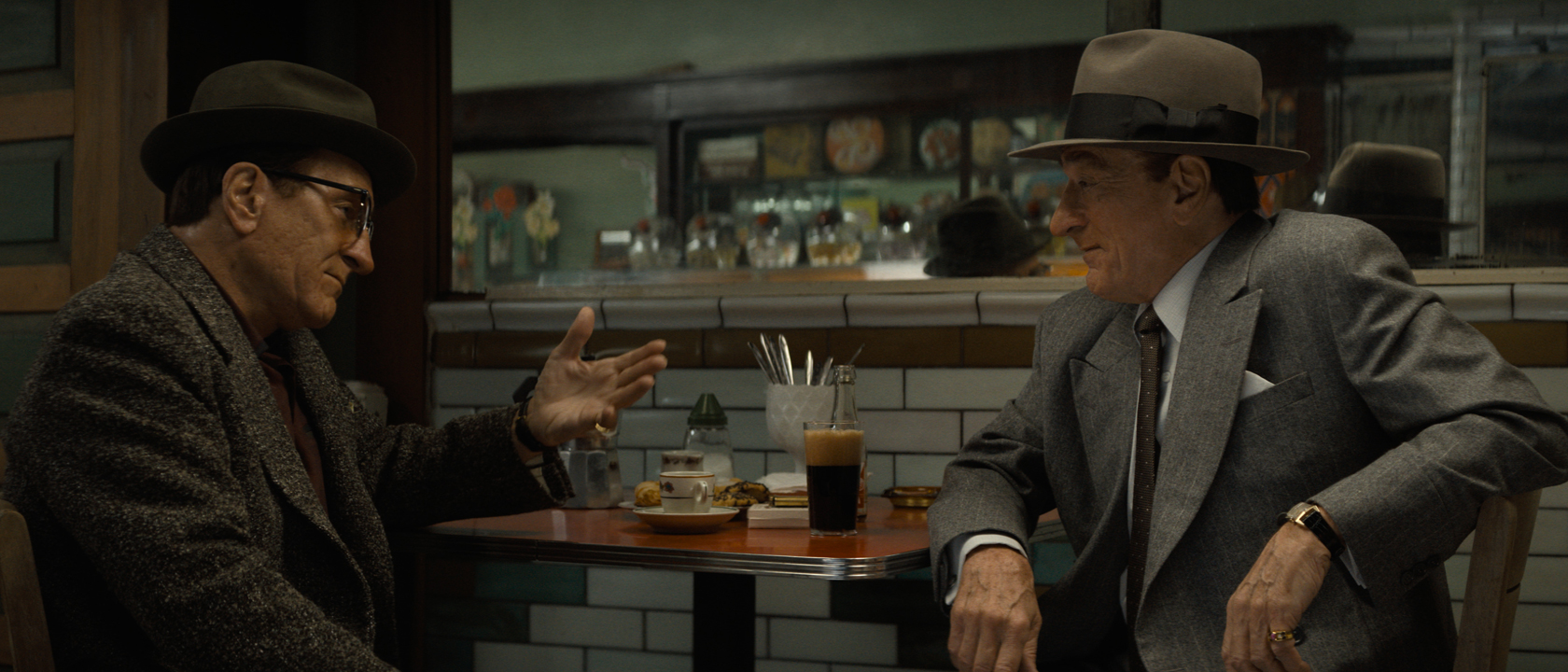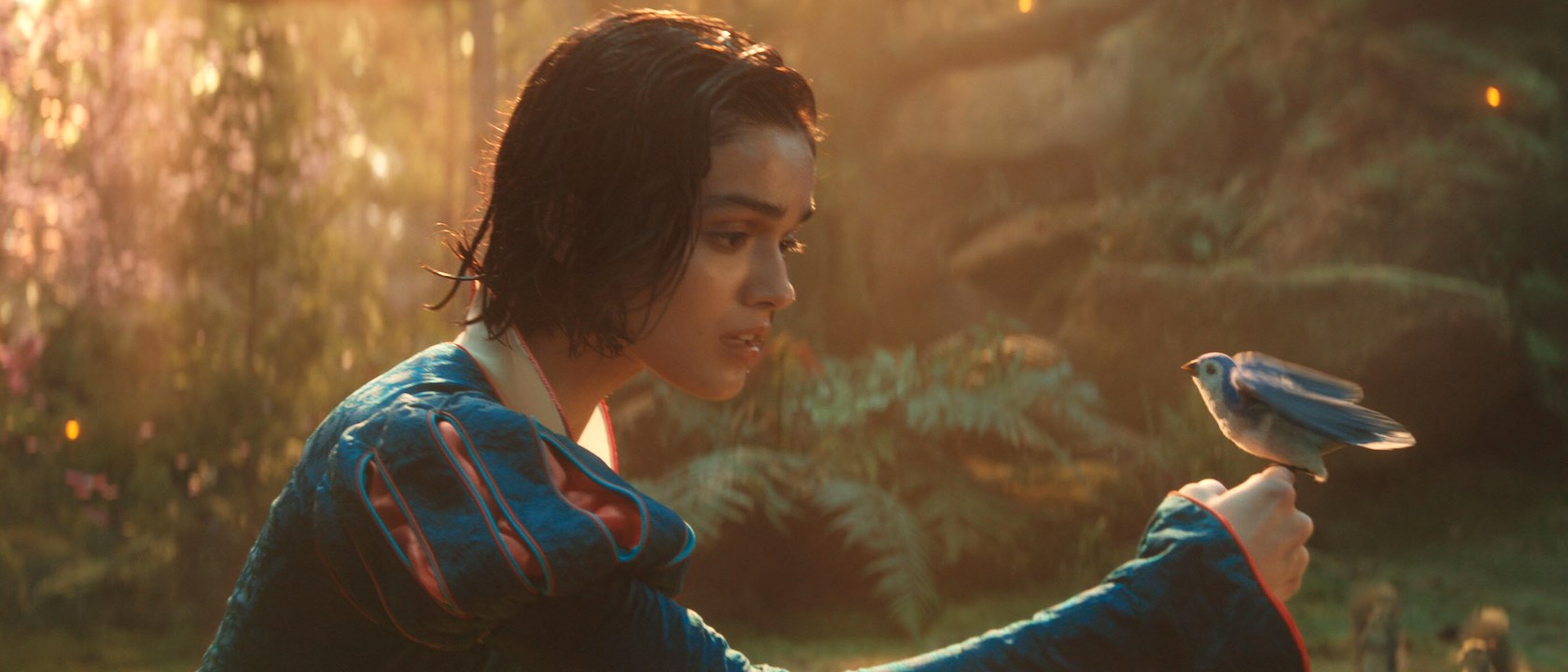2006 has been a strong year for animated film. From racing cars that tug at your heart strings to wacky wildlife encountering the suburban wilds for the first time, the subjects of this year’s animation have been diverse. None of them hold a candle to the characters or story of A Scanner Darkly, a story that was filmed in live action and then rotoscoped over for an odd animated effect that might not create the best animation in the world, but definitely makes up the most interesting animated movie of the year. It’s hard to tack down exactly what A Scanner Darkly is about for a quick paragraph summary. Like most Phillip K. Dick stories, the underlying theme is a question of identity – who is the protagonist and how do we know that? Unlike Blade Runner’s Deckard or Minority Report’s John Anderton, that’s a question not even the main character of A Scanner Darkly can really answer.
From the start our main character is living with a dual identity. Seven years in the future, drug use remains a major problem, leading Anaheim’s police force to resort to using anonymous officers to investigate potential drug leads. Shrouded by “Scramble Suits,” which hide the identity of the officers, not even supervisors know who their staff consists of. Fred is the anonymous moniker used by one officer in particular, who is assigned to the case of Bob Arctor. The police force plants holographic cameras around Arctor’s ramshackle house and Fred is assigned to scan through the footage looking for potential leads. The trouble is underneath the scramble suit, Fred actually is Bob Arctor who, while using Substance “D,” isn’t the major player the police seem to think he is. The result is a drug addled study on perspective – how objective a person can be about life, whether living it first hand or watching it through cameras as a third party.
Adding to the trippy feeling of a story that uses drugs as a central plot device is director Richard Linklater’s decision not to present the film as a live action picture, but to animate over the footage he shot to create an easily manipulated environment that feels removed from reality. Originally I thought the animation was just a gimmick, but shortly after the film starts the animation looses its flash and dazzle and truly becomes a tool for telling the story. Technology like the scramble suits are brilliantly created in the animated world but, even more important, drug induced hallucinations become commonplace and make the viewer question whether they actually are hallucinations or just part of this world of the future. It’s an amazing accomplishment and I can’t imagine any other way Linklater could have pulled it off. This was truly a genius way to visually create a world of confusion, fear, paranoia, and doubt.
A Scanner Darkly is more than just artistic animation however. By beginning with life action Linklater creates a strong foundation for the film resting on his actors. Keanu Reeves turns in one of the better performances of his career, and it’s not just because his image is animated. His voice communicates a wealth of emotion and really establishes his character’s identity crisis throughout the film – who is he really? How did he get here? Does he even have a future? These are all questions he directly posits throughout the film but the weight of the questions is present in most of his dialogue. Robert Downey Jr. and Rory Cochrane deserve the biggest credit for the film, however, breathing their constantly high characters to life without resorting to overused clichés. The subtle nuances of Downey’s paranoia or Cochrane’s burned out ticks really define the downside of Substance “D” and the world around Fred/Bob Arctor and create an incredibly strong drama.
Drama is exactly what A Scanner Darkly is. Despite a vaguely futuristic setting (seven years in the future really isn’t that far, is it?) and advertising that sometimes makes the film appear to be an animated Matrix tale, the film bears little resemblance to traditional science fiction (although you have to love the fact that Substance “D” is a red pill, continuing the science fiction idea that you should always question the consequences of swallowing any red pill). Although there is just enough combination of the mundane and mysterious for the film to qualify as sci-fi, at it’s base the film really is about a quest for identity and a dramatic battle being waged inside one man - although he may be numb to the world after downing his drugs, can a man really ignore what he sees when he is scanning his own life? Like most good stories, the movie doesn’t necessarily contain all the answers, but it will definitely leave the viewer thinking when the final credits role. A film like A Scanner Darkly leaves so many questions for a person like me about the making of the movie that I almost dread the DVD release because I know I’m setting myself up for disappointment. Phillip K. Dick’s stories are heavy enough that entire documentaries could be created just to analyze his words. Add on top of that the decisions and interpretations made by the director, cast, and crew, and you’ve got room for hours of explanations. A Scanner Darkly barely exceeds half an hour with its bonus footage, but yet I still feel reluctantly satisfied by what is given.
First of all, the film looks and sounds fantastic. That’s very important for a film like this that takes such a stylized approach to its presentation. If the film transfer was bad the entire reason for owning this movie would be wasted, since so much of the film depends on the animated style. Thankfully, this is a very crisp, clear picture that looked just as good on my old thirteen inch screen as my newer large screen television.
There are only two bonus featurettes included on the disc. “One Summer in Austin: The Story of the Filming of A Scanner Darkly” starts with footage of Dick talking about his novel and then shows Linklater and the cast and crew talking about the approach they took to the story when making this movie. “The Weight of the Line: Animation Tales” gets a little more specific and only looks at the animation style and technique used to create the final movie. Both featurettes show a fair amount of footage from the live action aspect of the movie giving the viewer a chance to see what a scene looked like before it was animated. I found both of the featurettes to be quite interesting, although I would trade just about any time Woody Harrelson was included for more information from Linklater or even Keanu Reeves (Harrelson shows just how much art imitates life and how close he and his character really are in this film).
There is also a commentary track accompanying the movie that includes Linklater, Reeves, producer Tommy Pallotta, Dick’s daughter Isa Dick Hackett, and Dick historian Jonathan Lethem. There is a fair amount of information given in the commentary, which takes a pretty straight forward approach to sharing that info. These people are not just together to have a good time like some commentaries suffer from – they are here to tell the audience about how the movie was made or what Dick had to say about his own story. Although it’s not said outright, the track gives the impression that it was recorded in several independent sessions and then spliced together. Other than Linklater, who seems to interact with everyone, I can’t remember certain people ever talking to each other or even referencing what they say, which makes me think people like Reeves and Dick Hackett were never in the same room together, although that could be my mistaken perception.
Other than the theatrical trailer for A Scanner Darkly there is nothing else to be found on the disc. Theatrically released on a smaller scale, I would be very surprised to see a second release forthcoming. I think there’s a good chance this is all we will get on the making of A Scanner Darkly and while it leaves me wanting more (I’d love a version that allowed me to switch back and forth between the live action and animated scenes) it’ll do. Really, the grind of making of this movie isn’t as important as the reasons for making the picture, which is pretty well explained, and the movie itself, which gets a good presentation on the disc.
The Last Of Us Season 2 Premiere Watchalong: I'm Talking Joel And Ellie's Time Jump, Video Game Comparisons And More
Yellowjackets Co-Creator's Comments About Long-Awaited Pit Girl Reveal Are Making Me Rethink Everything We Know, And Not In A Good Way
Keke Palmer's Hilarious One Of Them Days Is Dominating Netflix, And I'm Hyped About All The Things She's Doing Next











